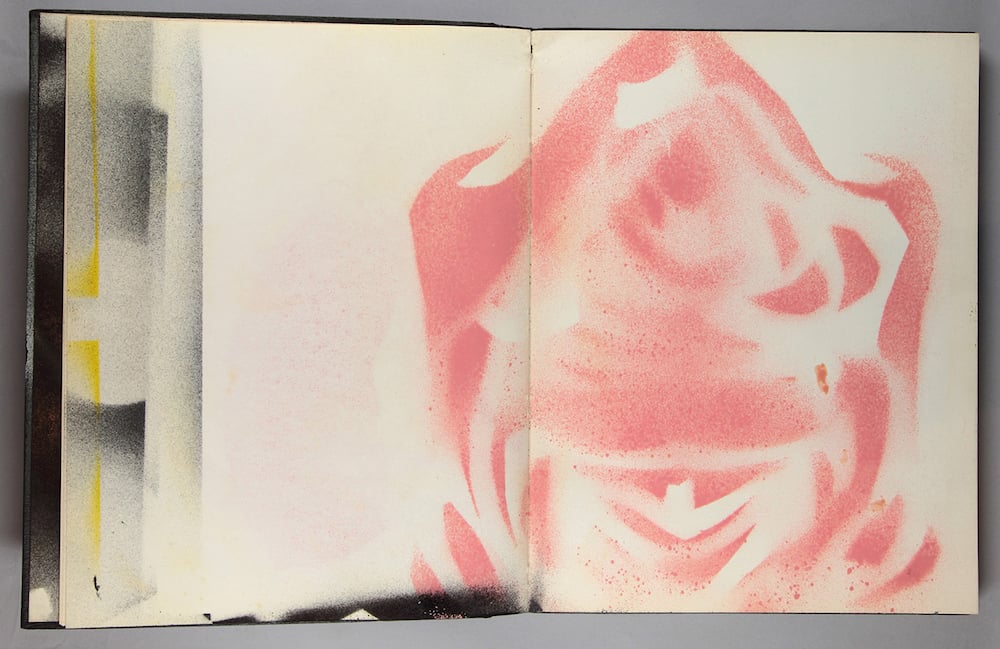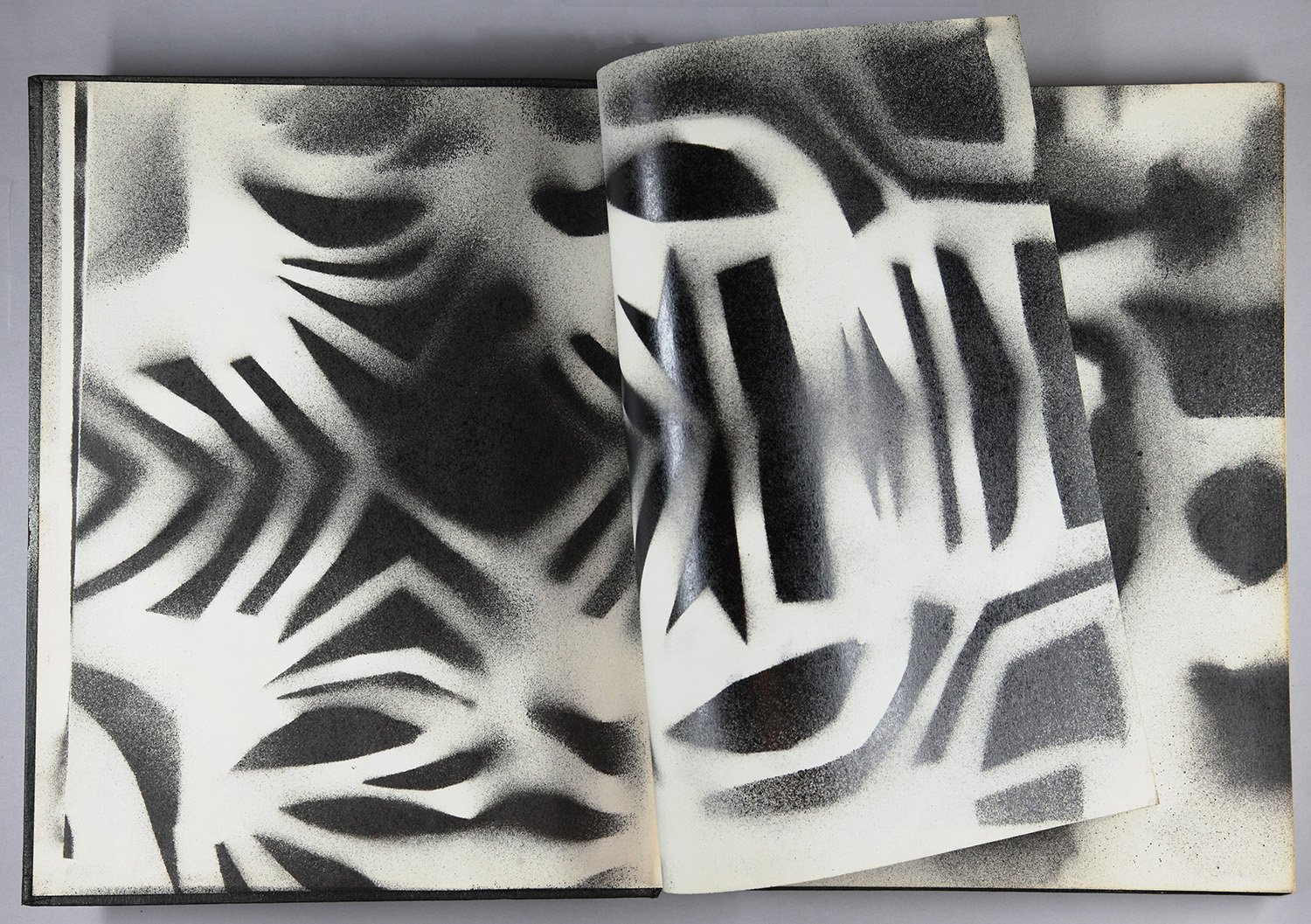Art & Exhibitions
At the Andy Warhol Museum, Is Abstraction Too Hetero for the Master?
THE DAILY PIC: Warhol dabbled with abstraction, but only rarely succumbed.

THE DAILY PIC: Warhol dabbled with abstraction, but only rarely succumbed.

Blake Gopnik


THE DAILY PIC (#1434): Sometime probably in the late 1950s, Andy Warhol filled this sketchbook full of lovely abstract images made by spraying paint through stencils. These abstractions are now on view in the Warhol Museum’s wonderful “By the Book” show, which is otherwise almost completely figurative. They link up with other almost-abstractions that he made decades later – with the great Shadows series from the 1970s and also, I think, with the Rorschachs from the ‘80s (like Rorschach blots, many of his stencils are made symmetrical by folding them in half).
Warhol was one of the great figures who led ambitious American art away from abstraction – but I think he did it on the principle that if you can’t join ‘em, you’d better beat ‘em. When he was going to school and then college in Pittsburgh, abstraction was the ultimate, aspirational symbol of the cutting edge, as it was through most of the 1950s. But somehow Warhol could never quite get himself to go all the way to the non-figurative – it’s almost as though he was afraid of trying and failing.
He dabbled with abstraction in 1954, showing folded-paper sculptures at the short-lived Loft gallery (they bombed). He tried again in the 1960s with the monochrome canvases that came paired with his Death and Disaster pictures (the angstful imagery carried all the weight). And there are other little feints at abstraction throughout his career.
But maybe “joining” the abstract camp would also have meant engaging with its hetero values, or even surrendering to them. His role models among gay artists – Jean Cocteau, Charles Demuth and Marsden Heartley – were all figurative artists, after all, because figuration was where you could poke a toe out of the closet.
Or maybe the answer is simpler: I have a funny feeling that Warhol, the ultimate aloof observer, treated the whole world as a giant abstraction – as something to scan rather than engage with. He didn’t need to avoid figuration in order to feel as though he were competing with Mondrian and Albers.
I think the tension is perfectly caught in Warhol’s late Camouflage paintings: Each one depicts (or simply is) an abstract pattern that’s also a recognizable “thing” in the world, but one that is meant to prevent other things from being recognized.
For a full survey of past Daily Pics visit blakegopnik.com/archive.
